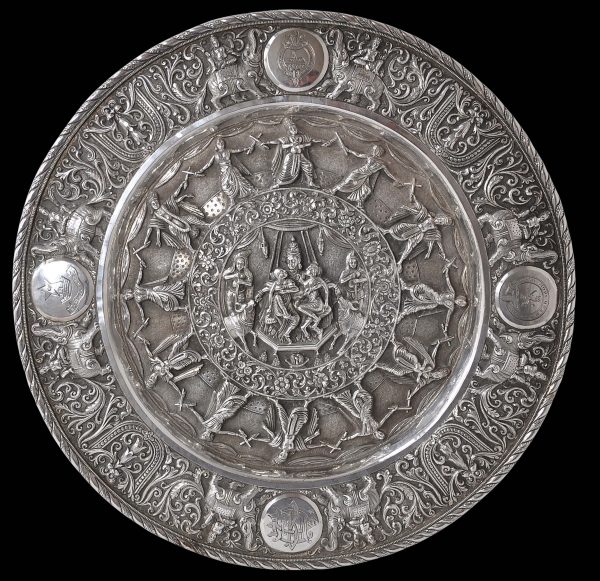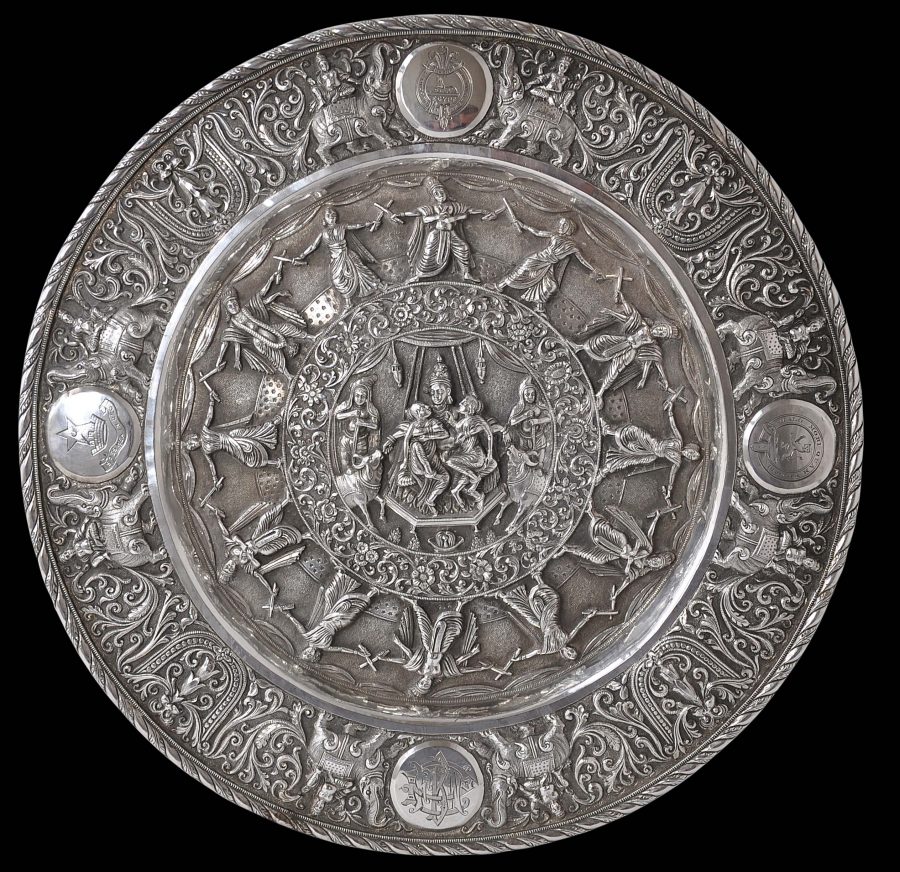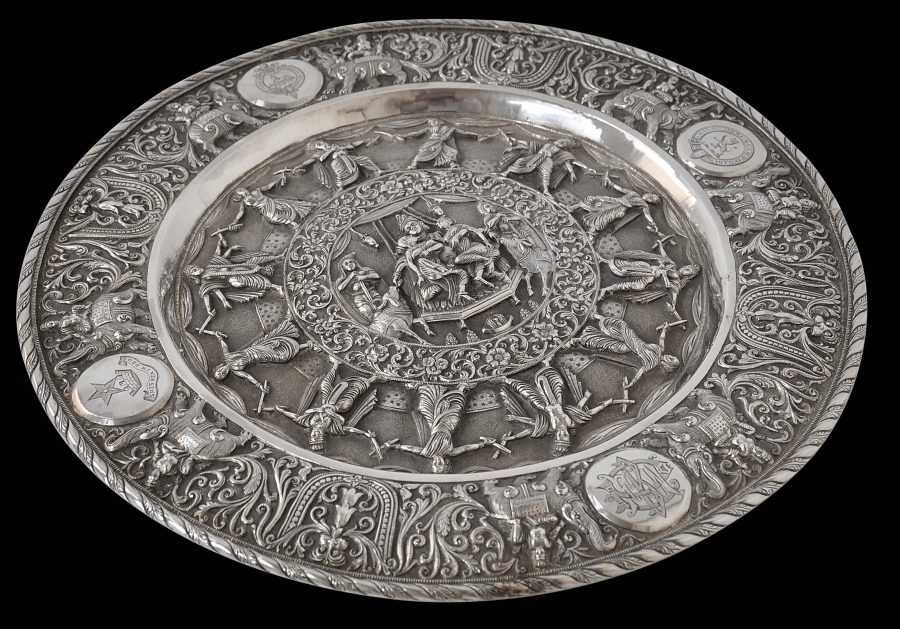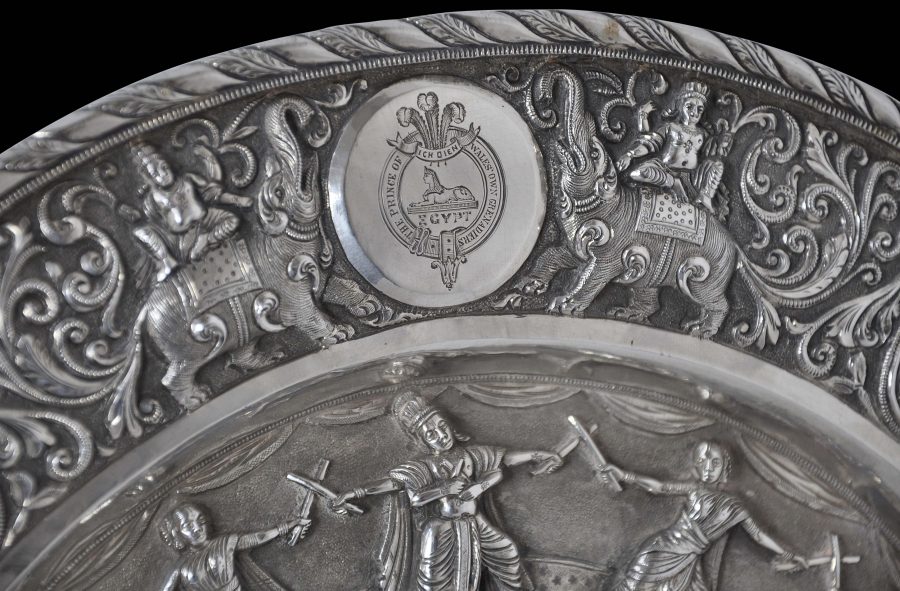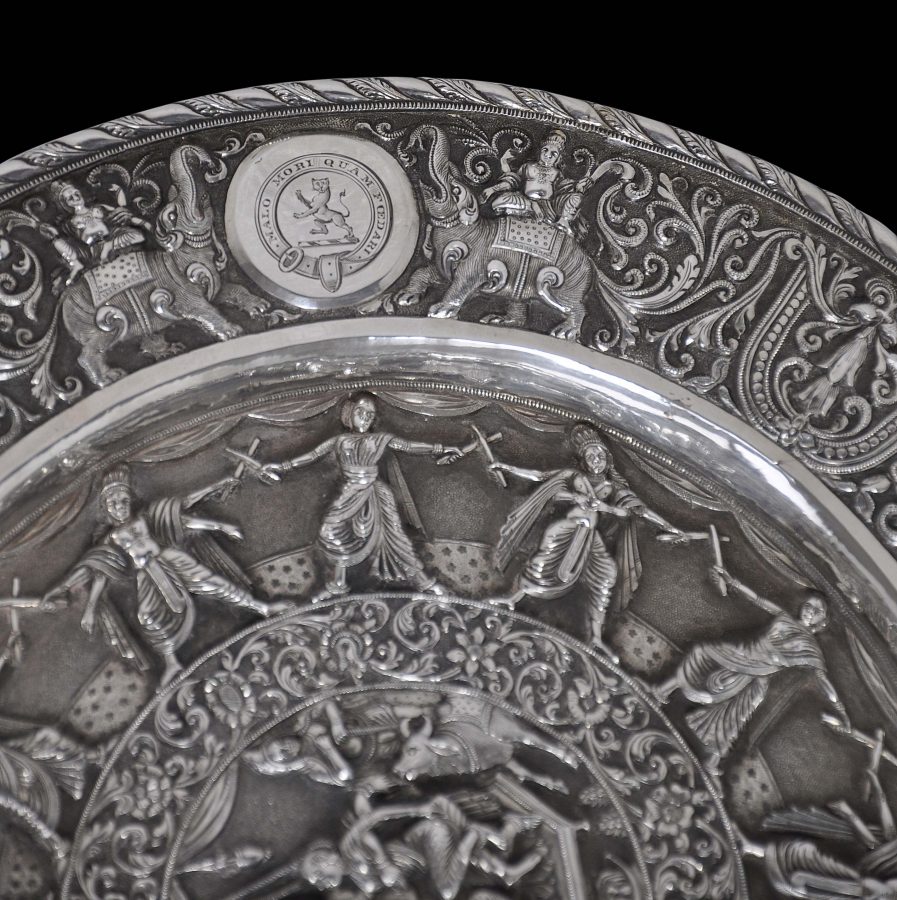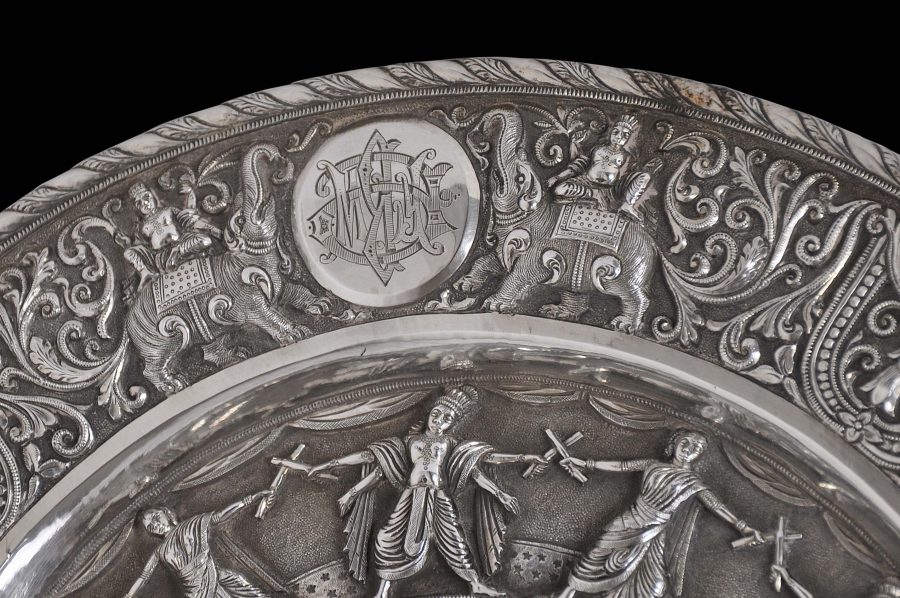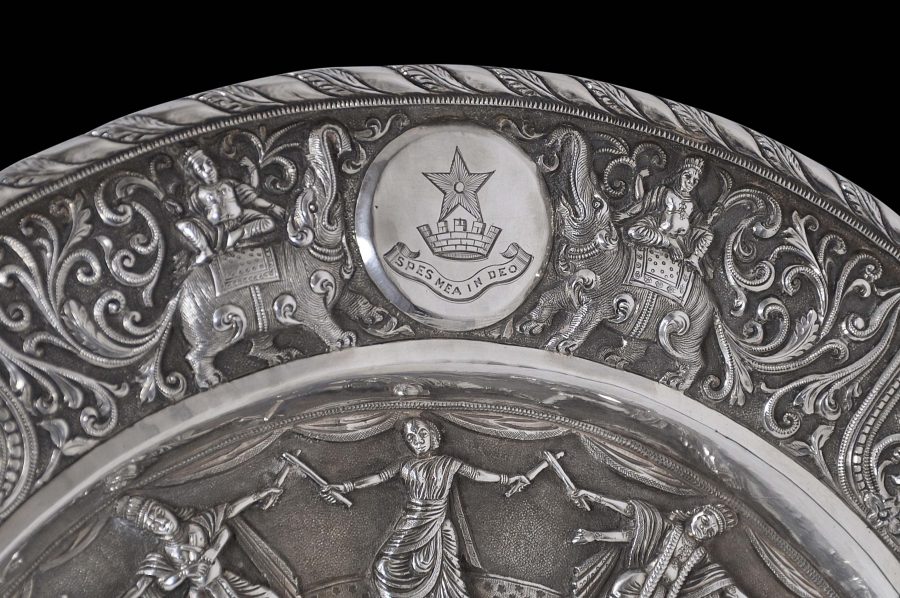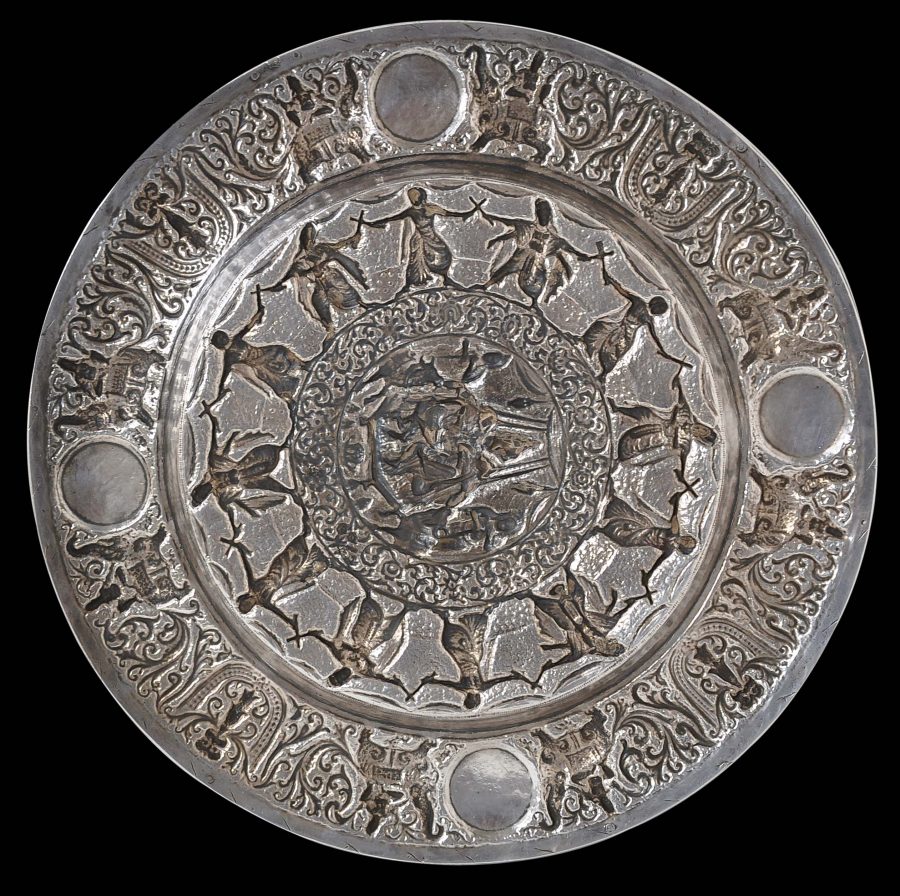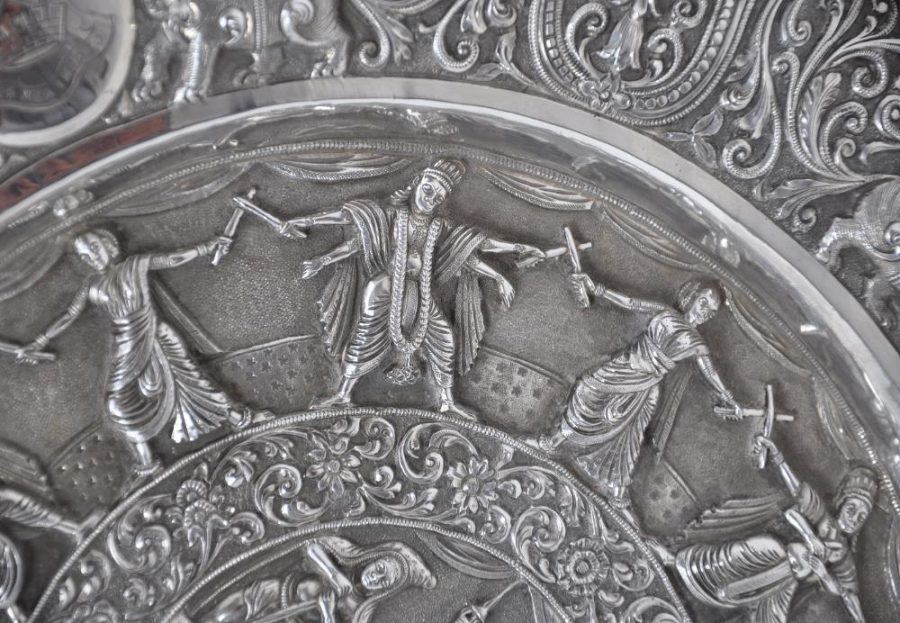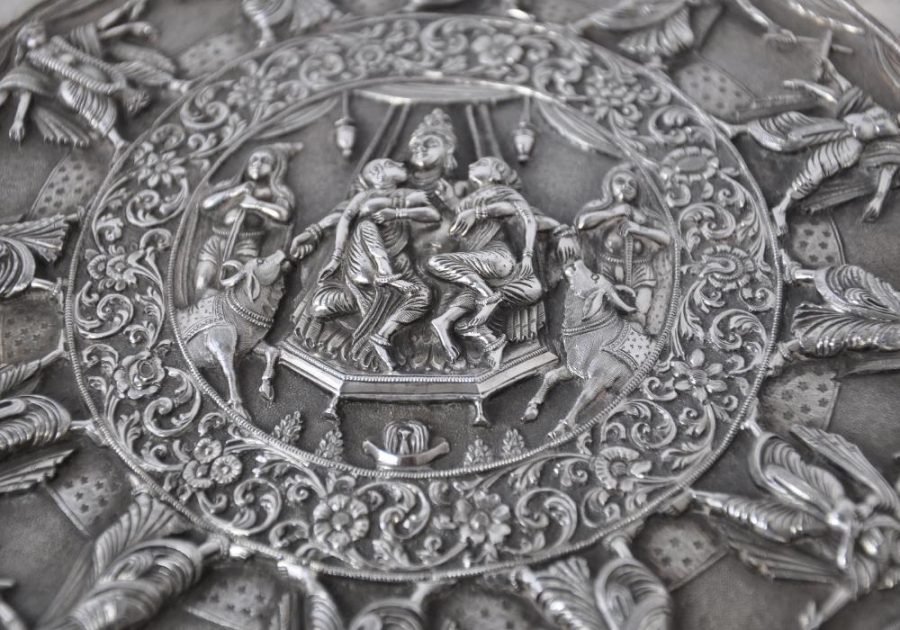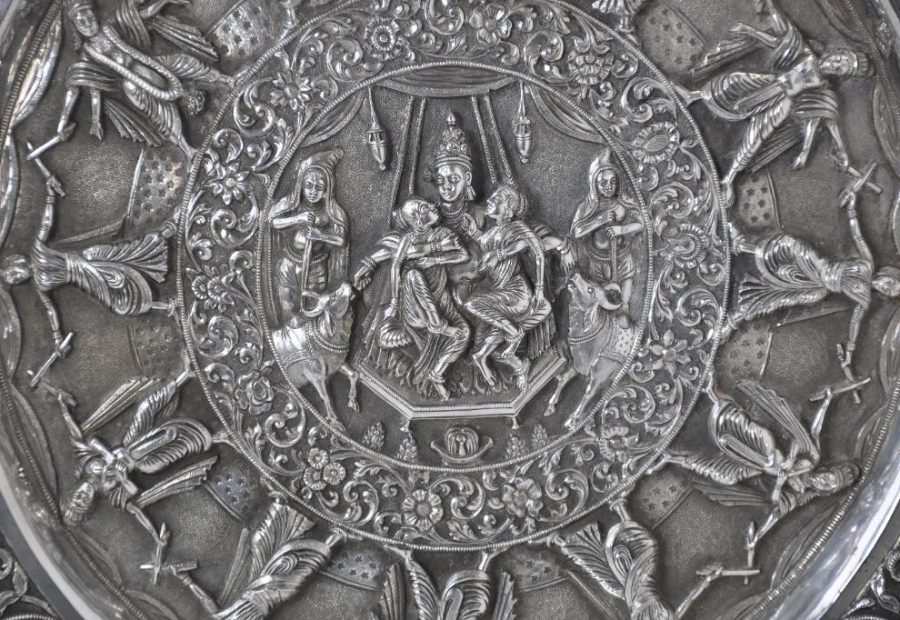Some of the finest and grandest examples of Indian colonial silverware were commissioned by British and colonial army regiments stationed in India. And so it is with this piece, which features some of the finest chasing, repousse and engraving work among Indian colonial silver that we have seen. The work is excellent and the item itself is unusually heavy for its size.
The salver features a broad rim filled with Indian figures astride caparisoned elephants separated by stylised kurtimukha masks, swirling foliage and tendrils, and four roundels engraved with regiment-related insignia, all against a tooled background. The well of the bowl is decorated with an outer broader of twelve dancers in Indian costume. An inner border is chased with Kutch-like scrolling flower and foliage decoration. The central roundel has in unusually high-relief a figure of what is probably Vishnu seated on a pedestal throne with his consorts Bu Devi and Sri Devi, with supplicants and bulls (perhaps representing Vishnu’s vahana Nandi to either side.)
The work and motifs on the salver are typically hybrid for Bombay silverwork. Bombay was a city of domestic migrants and the local silversmithing fraternity were not exempted. The salver shows influence from Madras, Sri Lanka and Kutch colonial silversmithing traditions.
The regiment became known as the 102nd Prince of Wales’ Own Grenadiers in 1903. In 1906, it became the 102nd King Edward’s Own Grenadiers, and in 1922, it became the 2nd Battalion, 4th Bombay Grenadiers. As the plate is clearly engraved with the name and insignia for the Prince of Wales’ Own Grenadiers, then this plate must date to between 1903 and 1906.
One of the four roundels has a crest for the Prince of Wales’ Own Grenadiers. The insignia which has a central figure of a Sphynx above the word ‘Egypt’, and a buckled strap with the motto ‘Malo Mori Quam Foedari’ (‘Death rather than disgrace’). Another roundel shows a rampant tiger surrounded by a buckled belt again engraved with the words ‘Malo Mori Quam Foedari’.
A further roundel has a family crest that comprises the crest of a pierced molet arising from a mural crown with a motto ‘Spes Mea In Deo’, (‘My hope is in God’). The motto is recorded for the Blewitt, Brooke, Dewhurst, Gaskell, Gillett, Goskar, Greaves, Guinness, Kirkwood, Lethbridge, Lewin, Roper, Saunders, Wainwright and Ward families.
The final roundel is engraved with the overlapping personal initials of ‘FWBP’.
The 102nd Prince of Wales’s Own Grenadiers was an infantry regiment of the British Indian Army that could trace its origins to 1796, when it was established as the 13th Battalion, Bombay Native Infantry. The Grenadiers was part of the Indian army and was sent to Egypt in 1801, to fight against Napoleon’s Egypt Campaign, hence the Sphinx being adopted as part of its insignia thereafter. In 1818, the regiment fought in the Maratha Wars. In 1840, it took part in the First Afghan War, and the 1868 punitive Expedition to Abyssinia against the Ethiopian Emperor Tewodros II of Ethiopia. In 1880, it took part in the Battle of Maiwand during the Second Afghan War. It also took part in various battles during the First World War. In the Second World War, the regiment had roles in India, Burma, Malaya and Dutch East Indies.
The salver is in perfect condition with no obvious wear or rubbing from cleaning.


